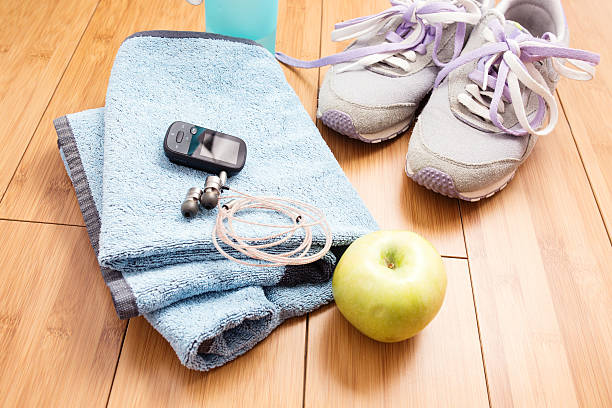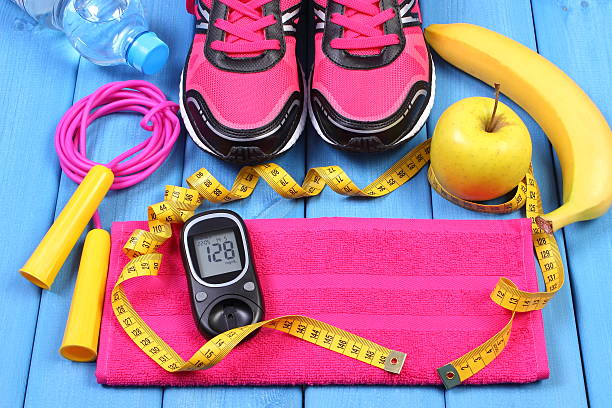Maintaining healthy blood sugar is important for everyone—not just people with diabetes or prediabetes. Even if you feel fine, unstable blood sugar can lead to low energy, brain fog, or mood swings. Over time, it may increase your risk for chronic conditions. That’s why building habits to support healthy blood sugar is a smart move at any age.
Exercise is one of the best ways to support stable blood sugar levels. Physical activity helps your body use insulin more effectively, which means your cells absorb sugar from your blood more easily. But where do you begin? Starting a new routine can feel overwhelming if you’re not sure what works best.
In this post, you’ll learn how to create a fitness routine that supports healthy blood sugar in a simple, practical, and sustainable way.
Let’s dive in.
Why Exercise Matters for Blood Sugar Control
When you move your body, your muscles use glucose (sugar) for energy. This helps lower the amount of sugar in your bloodstream. The more active you are, the more glucose your muscles need—especially during moderate to intense workouts. Over time, this can lead to lower blood sugar levels and better balance throughout the day.
Regular exercise also makes your body more sensitive to insulin, which helps you process sugar more efficiently. That means your body doesn’t need to produce as much insulin to move sugar from your blood into your cells. This is important for keeping healthy blood sugar levels and reducing the risk of insulin resistance.
According to the Centers for Disease Control and Prevention (CDC), staying active is one of the most powerful tools for blood sugar management.

How to Start a Blood Sugar-Friendly Fitness Routine
1. Set Clear Goals
Before you begin, ask yourself what you want to achieve. Setting a clear goal helps you stay focused and motivated. Do you want to:
- Lower your blood sugar levels?
- Lose weight?
- Increase your energy?
- Improve your mood?
Maybe you want to build strength or feel more active during the day. Knowing your reason will help you choose the right exercises and stick to your fitness routine over time. It also helps you track your progress and make changes when needed.
Write down your goals and refer to them when you need motivation. Clear goals keep you focused and help track your progress.
2. Choose the Right Types of Exercise
Not all workouts affect blood sugar in the same way. Some types of exercise lower your blood sugar quickly, while others help keep it steady over time. That’s why a balanced plan works best. The best routine includes a mix of the following:
Cardio (Aerobic Exercise)
This includes walking, cycling, dancing, and swimming. Cardio burns glucose and helps improve insulin sensitivity.
- Aim for 150 minutes a week (e.g., 30 minutes, five days a week).
- Even brisk walking counts!
Strength Training
Building muscle helps your body store and use glucose better. You can use weights, resistance bands, or your own body weight (think squats and push-ups).
- Do strength training at least two days a week.
- Focus on all major muscle groups.
Flexibility and Balance Exercises
Yoga and stretching help reduce stress and keep your body moving comfortably. Stress can raise blood sugar, so reducing it matters.
- Try yoga or light stretching 2–3 times a week.
- Combine with deep breathing for even more benefits.
This mix helps your body manage sugar more effectively while keeping your workouts safe, enjoyable, and sustainable.
Sample Weekly Fitness Plan for Blood Sugar Support
Here’s a simple plan you can adjust to fit your lifestyle:
| Day | Activity |
|---|---|
| Monday | 30-minute brisk walk |
| Tuesday | 20-minute strength training |
| Wednesday | Rest or light stretching |
| Thursday | 30-minute cycling or dancing |
| Friday | 20-minute strength training |
| Saturday | Yoga or balance exercises |
| Sunday | Rest or nature walk |
Start small and build up. Even 10 minutes of activity is better than none!
Best Time of Day to Exercise for Blood Sugar
Exercise at any time helps, but some studies suggest working out 30–60 minutes after a meal may help lower blood sugar spikes. That’s when your blood sugar is highest, so movement can help your body use the sugar more efficiently. This is especially helpful if you’ve eaten a meal high in carbs, which can raise blood sugar quickly.
A short walk, light stretching, or gentle cycling after eating can make a big difference. It doesn’t have to be intense—just enough to get your muscles working. Over time, this habit can support more stable blood sugar and better digestion.
But the best time is the one that fits your schedule. Consistency is key.
How to Monitor Your Progress
Tracking your progress helps you stay motivated. It shows how far you’ve come and helps you stay on track with your goals. When you see results—like better energy, lower blood sugar, or more strength—it encourages you to keep going. Try these tips:
- Use a fitness tracker or app to log workouts.
- Keep a journal of how you feel after each session.
- If you monitor blood sugar, track levels before and after exercise (ask your doctor first).
- Note non-scale victories like more energy or better sleep.
You can also take progress photos or note how your clothes fit. Small wins add up and remind you that your hard work is paying off.

Tips to Stay Consistent
Making a routine stick is the hardest part—but also the most rewarding. Sticking with regular exercise takes time, effort, and patience. But once it becomes part of your daily life, it gets easier and more enjoyable. You’ll start to feel the benefits, like more energy, better mood, and more stable blood sugar levels. Here’s how to keep going:
- Schedule your workouts like appointments.
- Start with short sessions and build up gradually.
- Find a buddy to walk or work out with.
- Celebrate small wins, like reaching 10,000 steps.
- Keep your gear handy—no excuses when it’s right there!
It also helps to have a workout buddy or join a class for support. Celebrate your wins—no matter how small—and remember why you started. Consistency is key to building a fitness routine that supports healthy blood sugar in the long run.
Special Considerations for Diabetes or Prediabetes
If you have diabetes or prediabetes, check with your doctor before starting a new routine. Everyone’s health needs are different, and your doctor can help you exercise safely. You may need to:
- Check your blood sugar before and after exercise.
- Carry a small snack in case your sugar drops too low.
- Stay hydrated and wear proper shoes to avoid foot injuries.
Your doctor might also suggest working with a certified trainer or diabetes educator. Taking these steps helps prevent low blood sugar (hypoglycemia) and keeps you on the right track toward building a fitness routine that supports healthy blood sugar.
Learn more from the American Diabetes Association.
What to Eat Before and After Exercise
Fueling your body the right way can keep your energy and blood sugar steady:
Before Exercise:
- Small snack with carbs and protein (e.g., apple with peanut butter)
- Avoid heavy meals right before intense workouts
After Exercise:
- Healthy meal with protein and complex carbs (e.g., chicken and quinoa, or Greek yogurt with berries)
- Stay hydrated
Common Mistakes to Avoid
- Skipping warm-ups or cool-downs – these help prevent injury.
- Doing only one type of exercise – variety boosts results.
- Overdoing it – more is not always better. Rest matters too.
- Ignoring your body – if you feel dizzy, tired, or in pain, stop and rest.
Tools That Can Help
Here are some tools and apps that can support your fitness journey:
- MyFitnessPal – for tracking food and activity
- Fitbit or Apple Watch – for monitoring steps and heart rate
- Glucose tracking apps – if you track blood sugar
- YouTube fitness channels – like Fitness Blender or Yoga With Adriene

Final Thoughts: Take the First Step Today
Creating a fitness routine that supports healthy blood sugar doesn’t have to be complicated. You don’t need a gym membership or a strict workout plan to get started. Start with small, simple steps that fit into your daily life—like walking after meals, stretching in the morning, or dancing to your favorite songs. The key is to move more, mix it up, and listen to your body.
Try different activities to find what feels good and keeps you motivated. As you stay consistent, these small changes add up. Over time, you’ll build habits that lead to better energy, mood, and overall health. Most importantly, you’ll support stable blood sugar in a way that feels easy and sustainable.
You’ve got this.
Ready to Get Started?
Start with just one change today. You don’t have to do everything at once—small steps make a big difference. Go for a walk, stretch for five minutes, or plan your first workout. Even a short burst of movement can help support healthy blood sugar and boost your mood.
The goal is to build momentum and create habits that stick. Every action you take brings you closer to better health. Then come back and tell us—what’s your next step? Whether it’s adding another walk, trying a new activity, or setting a goal, we’d love to hear how you’re building your fitness routine.
Let us know in the comments below or share this post with someone who wants to feel better and take control of their health.

